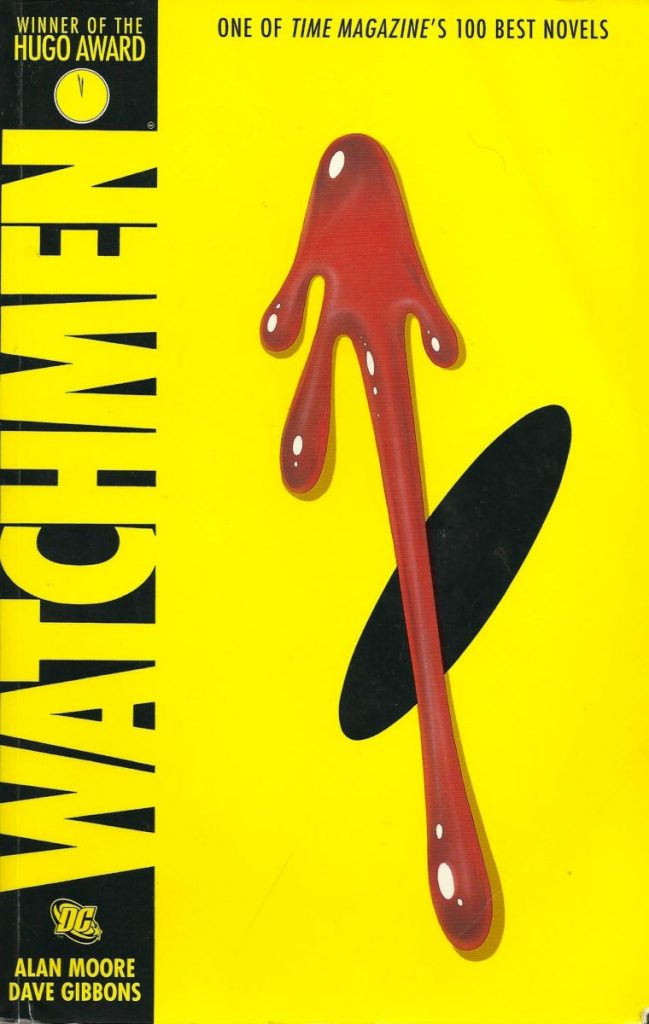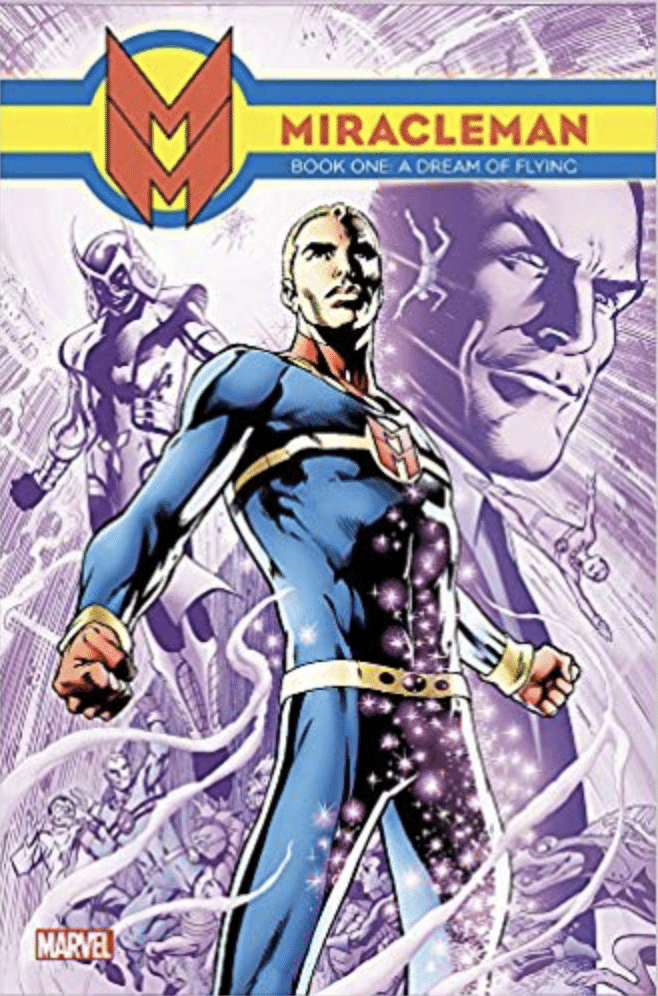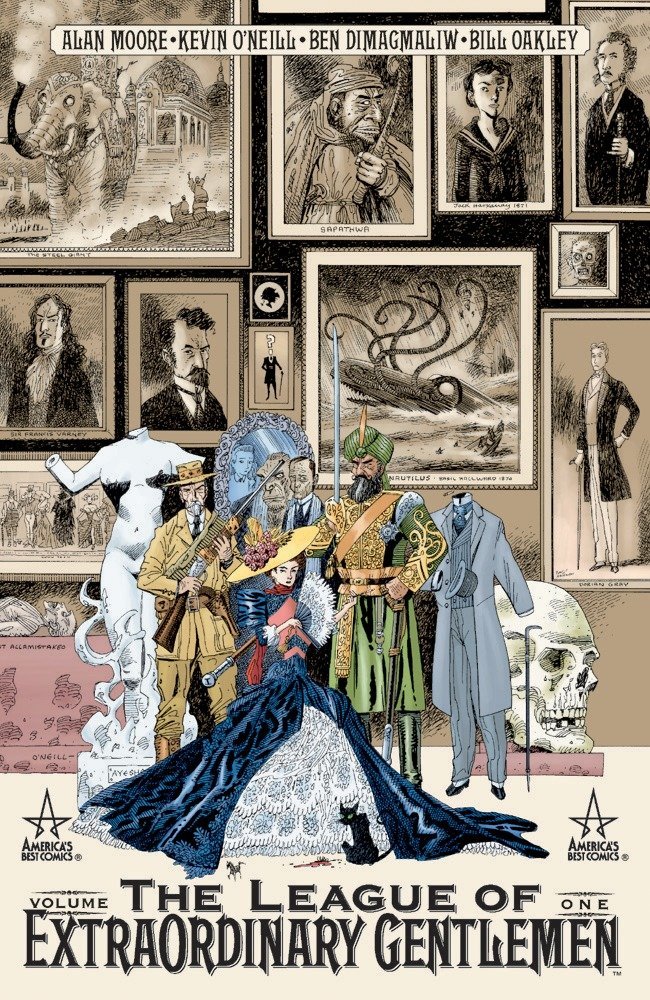It’s not an exercise in hyperbole to say that Alan Moore changed the vocabulary of comic books. Outside of perhaps Lee and Kirby, Moore has done more to advance the evolution of the comic book medium. Certainly, Alan Moore can be credited as the godfather of creators who helped bring comic books a level of respectability that they hadn’t previously held.
There’s no doubt that Alan Moore’s bench is full of rock star titles. It’s difficult to narrow it down to just seven titles that one should check out. If Alan Moore’s name is on the cover of a book, it practically begs for your attention and well-earned dollars. While not everything Moore writes is a classic (avoid his Liefeld universe books like the plague), he almost always has something interesting to say in a medium that is still too interested in navel-gazing at guys in tights punch each other ad nauseam.
With the latest live action adaptation/sequel of his work, Watchmen, wrapping up on HBO, I thought it would be a great time to reflect on Alan Moore’s seminal works. In 2018, I wrote about seven Alan Moore stories that I thought were underrated outside of the usual. I listed at that time the seven works that always get the spotlight. Today, I want to explain why I think those books shine above all others.
Watchmen

First things first: you have to read Watchmen. Period. There’s no debating this. Ignore every other recommendation in this article to your peril, but you must read Watchmen. I don’t want to come off as a gatekeeper. However, there’s a reason Watchmen is considered to be the greatest comic book of all time.
The Arkenstone in the Alan Moore treasure hoard of comic book gems, Watchmen inarguably stands today as the greatest achievement in the medium. Alan Moore expertly deconstructs the superhero mythos by translating these godlike heroes into something most people never could comprehend: as humans. Moore strips away the austerity of the superhero in a tale that both hews close to reality while also entrenching itself in the fantastical.
Watchmen follows the story of a world standing on the brink of nuclear annihilation between the US and USSR. Superheroes have been banned via the Keene Act, and in their absence the world has slowly decayed. The antihero/vigilante Rorschach investigates the murder of former “hero” (because, let’s face it, there aren’t any real heroes here) the Comedian.
What spins out from there is a tale featuring superheroes backstabbing one another, plots involving the end of the world, extradimensional terrorist attacks, and several pages featuring a blue penis. Watchmen is truly an accomplishment in superhero storytelling. It’s not farfetched to say every comic since the publication of the series has tried in its own way to be Watchmen.
Batman: The Killing Joke
Considered by many to be the best Batman story of all time (seeing a trend here with Moore’s writing?), The Killing Joke is one of the earliest attempts to give the Joker an honest to goodness origin story. Along with artist Brian Bolland and colorist John Higgins (a remastered version released just a few years ago would feature Bolland recoloring the book), Moore creates a story that focuses on the Joker’s attempt to drive Commissioner Gordon insane. The Killing Joke is a tragic tale that remains one of the strongest Batman stories to date.
Originally intended as a standalone 48-page one-shot, the popularity of the events portrayed in The Killing Joke were folded into the regular Batman continuity of the time. Famously (or infamously), Joker’s shooting and crippling Barbara Gordon became a mainstay of DC continuity up until the New 52.
The Killing Joke also features a deliciously ambiguous ending. Does Batman finally go full-on Punisher and end the clown prince of crime’s life, or do they simply share a laugh together in the rain? It’s a credit to Moore and Bolland’s storytelling that we still debate the ending today.
Swamp Thing

Before there was a Vertigo imprint, Alan Moore’s Swamp Thing introduced the themes and atmosphere that would define that imprint. So important were Moore’s Swamp Thing stories, it’s not surprising that the title helped create what we now know as the Vertigo imprint, becoming one of the standard bearers for Vertigo throughout the imprint’s lifespan.
RIP, man. RIP.
Moore rescued Swamp Thing from the brink of cancellation by turning the horror comic into something more. Moore was given virtually a blank slate to rewrite the series as he saw fit, becoming the first mainstream comic book to ditch the outdated Comic Codes Authority.
Tossing out the origin of the creature, Moore gave Swamp Thing a new lease on life. By exploring adult themes such as the environment, sexuality, and spirituality, Moore rewrote what a mainstream comic book could explore. Moore’s four-year run on Swamp Thing catapulted him to mainstream stardom, and for good reasons. The depth and detail of his storytelling still resonates today as reprints of his Swamp Thing run continue to be published and read today.
V for Vendetta
V for Vendetta deserves a spot on the all-time greatest Alan Moore story list for its unflinching exploration of politics in a post-apocalyptic future. Originally published in the British anthology Warrior, V for Vendetta is most closely associated with DC Comics and the Vertigo imprint.
Politics lie at the center of V for Vendetta, which is common for all of Moore’s writing, but it’s especially on display here. Moore’s use of politics sometimes turns readers off, but Moore clearly isn’t bothered by that qualm. Any Moore comic book outside of the Liefeld stories (*puke*) is going to feature heavy doses of political opinions.
The story oscillates between the totalitarian force of the fascist British government and the anarchical chaos espoused by V. Wearing a Guy Fawkes mask, V shows that ideas are bulletproof in the face of oppression. The mask is both a symbol of nihilism and hope, both in the comic book and the real world. The Guy Fawkes mask has become the symbol of protest for many, most famously with the group called Anonymous. Such acts of rebellion actually please the curmudgeonly Moore and show just how far the influence of V for Vendetta has reached. It’s a book that demands the reader’s attention.
Marvelman/Miracleman

I have written about my love of Marvelman on Nerds on Earth before. To me, it’s Alan Moore’s masterpiece. Like V for Vendetta, Marvelman began life in Warrior in the UK. Once it was reprinted here in the good ol’ US of A it was renamed Miracleman due to legal issues with a certain American comic book publisher. Oh, and Marvelman’s history is absolutely pockmarked with legal issues that are too deep and wide to get into here.
Marvelman follows the tale of Mick Moran, a journalist who has forgotten that he is the hero Marvelman. Upon rediscovering his true identity, everything changes for Moran, his wife, his former young allies, and the world. What does one do when they realize they are a god? It’s an interesting question in a genre filled to the brim with godlike heroes that trounce villains on the daily while wearing spandex and quipping one-liners.
It’s a riveting story that was just so gosh darn hard to find once Eclipse went under and reprints, along with individual issues, skyrocketed in price. For years, reading Marvelman was a costly venture. Thanks to the efforts of Marvel, the company that forced the initial rename, Marvelman once again is in print for all the masses to enjoy.
I think one of the most impressive aspects of Moore’s Marvelman is that it gave a young Neil Gaiman the opportunity to continue the story. Though we only got a handful of issues from Gaiman’s run, his Golden Age is strikingly beautiful, holding the potential to possibly exceed what Moore accomplished on the book.
Though Marvel has endlessly teased that Gaiman will return to finish his planned Marvelman story for the past decade, nothing has come of it. Perhaps one day we will see if Gaiman can truly surpass Moore’s original sixteen issue tale.
From Hell
Moore’s stories often involve elements of horror and weird fiction just as much as they do politics. Without a doubt, From Hell stands out as his horror masterpiece.
From Hell is Alan Moore and Eddie Campbell’s take on the heinous Jack the Ripper killings. It was a labor of love for Moore and Campbell, taking almost ten years to complete across a variety of different publishers before finally landing at Kitchen Sink, with reprints now being published by Top Shelf. The gripping and often gruesome retelling of the Whitechapel murders is a meticulous exploration of British society in the 1880s and how the murders were a product of the times.
From Hell is massive! The various collected editions of the story clocks in at almost six hundred pages each, depending on how much backmatter and supplemental material is included. Moore obviously did his homework on the murders and posits his own suspect in the form of Sir William Gull, physician to the royal family. In Moore’s telling, Gull is enlisted by Queen Victoria herself to silence the lives of prostitutes who have knowledge of an illegitimate royal child.
What follows is a chilling rebuke of Victorian society where time and motives are constantly in question. Freemasons, prostitutes, dirty royals, detectives. From Hell has it all. It’s a brilliant take on well-trodden ground, but it’s quite a yarn.
As with almost any film adaptation of Moore’s work, everyone should avoid the From Hell movie. It egregiously stands out as the single worst adaptation of Moore’s work, and that’s saying something. It’s a mind-bogglingly bad film, let alone a terrible adaptation of some of Moore’s finest work. No wonder he gets so prickly when Hollywood comes calling! However, the comic book is a must read for fans or horror and period fiction.
The League of Extraordinary Gentlemen

Alan Moore and Kevin O’Neill’s League of Extraordinary Gentlemen began in 1999 and just recently ended this year, marking Moore’s supposedly “final” comic book publication. Spread out between four volumes and several spin offs, The League of Extraordinary Gentlemen is a saga that spans decades and literary history.
Following the exploits of fictional characters such as Mina Murray, Alan Quartermain, Dr. Jekyl, and Captain Nemo, The League of Extraordinary Gentlemen teamed up some of literature’s best fictional heroes into a proto-esque Avengers or Justice League.
A mix of humor, horror, and socio-political commentary, the various volumes that make up The League of Extraordinary Gentlemen offer Moore another chance to stretch his creative muscles and dive deep into his literary inspirations. Each issue is absolutely filled to the brim with references to literature, art, and culture, as well as previous volumes of the title. Reading the League books always involves reading the story and then returning to them to catch all the references and nods one may have missed.
If volume 4, The Tempest, truly is the last original comic book we will ever see from Alan Moore, one could do no worse. The League of Extraordinary Gentlemen has proven to be a fun and entertaining way for such a giant to close out his storied career in comics.

